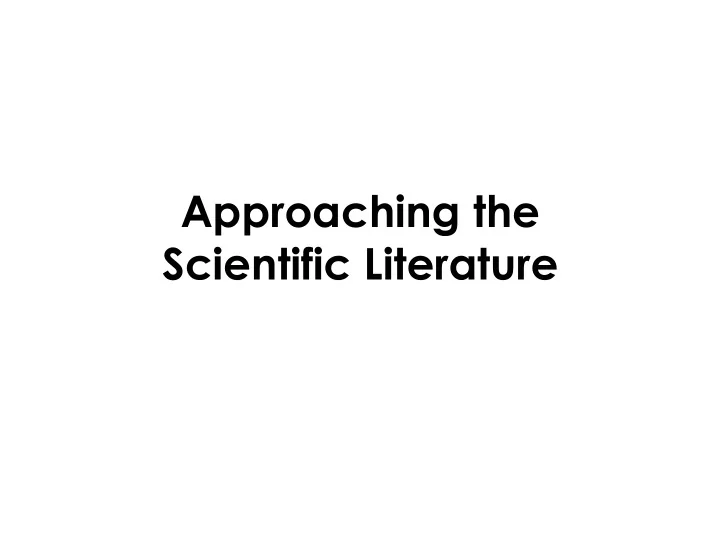

Approaching the Scientific Literature
Sections of a paper Title Abstract Introduction Materials and Methods Results Discussion
Title Usually conveys the take-home message
Abstract More than just a summary! Condenses the paper into one paragraph Lets the reader know why they should read your paper
Introduction Methods Results Conclusions
Introduction Supplies background information for the reader Describes the current state of research in the field Contains a brief description of methods Outlines a central question or hypothesis
Background information
Methods Prior results Question/Hypothesis
Materials and Methods Ideally contains enough information to reproduce the experiments Often ignored by readers
Use your resources!
Results Presents data in a written and graphical form Usually not ‘raw’ data Reiterates or elaborates on methods
Discussion Not just a conclusion! Restates the hypothesis or question Interprets the results Places the research in context Outlines future directions
Strategies for reading a paper Text-centric Read the paper straight through Interpret the written description of results, using figures where necessary Figure-centric Start with the figures and captions Refer to text for more information
Questions to ask yourself What was the scientific goal? Why is this research important? What did they measure and why? What were the results? What was the interpretation? Do you agree? Given the results, what would happen if you modified the experiments? Re-evaluate: Why is this research important?
Searching scientific literature PubMed: http://www.ncbi.nlm.nih.gov/ pubmed/ Web of Knowledge: http:// apps.webofknowledge.com/ Google Scholar: http://scholar.google.com/
Magnetosomes Are Cell Membrane Invaginations Organized by the Actin- Like Protein MamK
Earth’s magnetic field
http://backyardnaturalist.ca/?page_id=702 Birds can sense magnetism!
...but only if they can see control right eye covered left eye covered Wiltschko et al. Nature 2002, 419, 467-470.
Bacteria also sense magnetism http:// www.komeililab.org/ videos.html
Bacteria also sense magnetism
Bacterial membranes
Fluorescent proteins Green Fluorescent Protein Fusion Protein
Fluorescent proteins
Magnetosomes Electron cryotomography: http://www.komeililab.org/ videos.html
Supplemental Information
Magnetism can perturb vision http://blogs.discovermagazine.com/ notrocketscience/files/2010/07/ Bird_compass.jpg
Recommend
More recommend